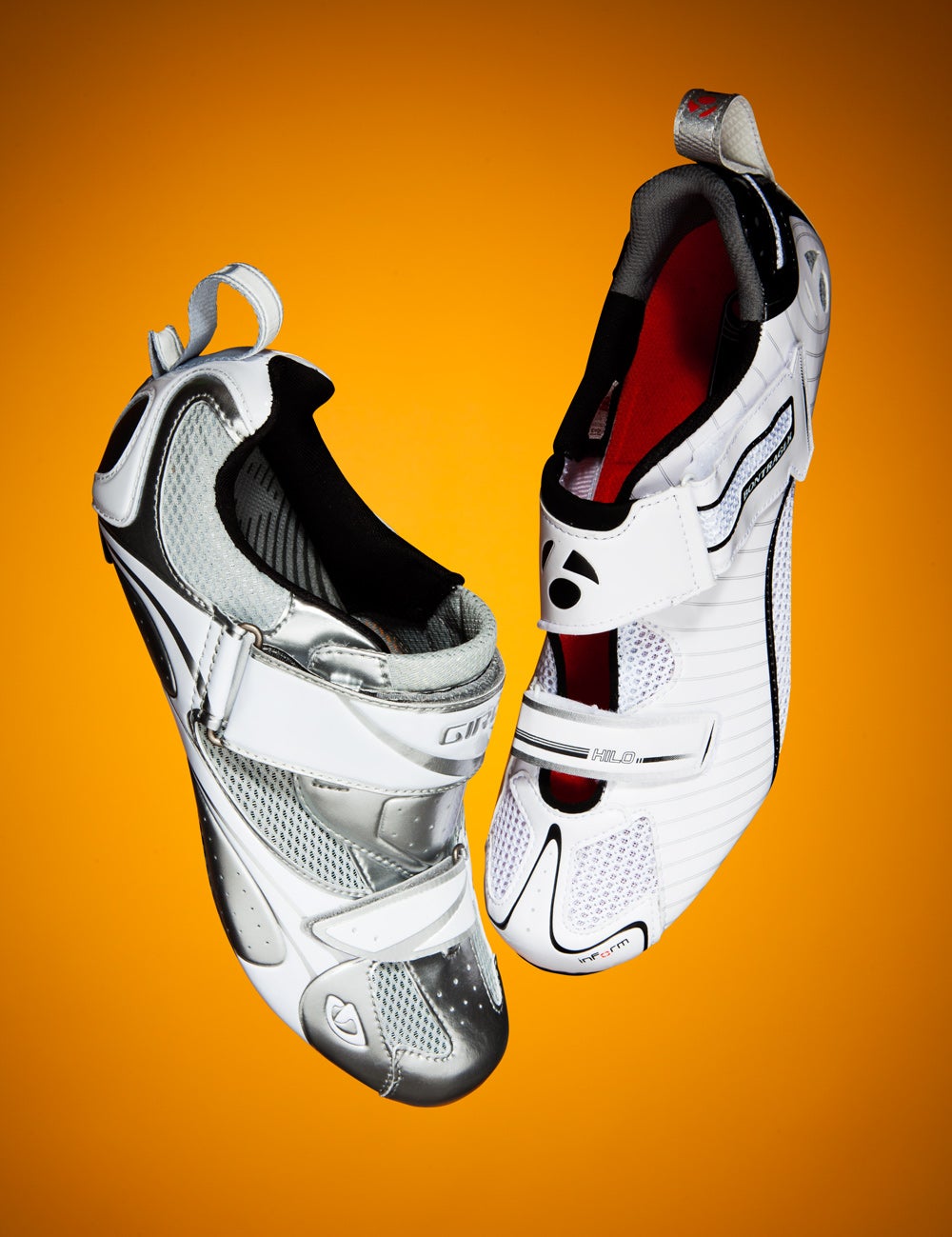Head To Head: Giro Mele Tri Vs. Bontrager RXL Hilo

Photo: John David Becker
Both of these new race-ready tri shoes are designed to help you hurry out of T1. We road tested them to help identify which one is best for you.
Fit and feel
Giro: Many tri shoes have floppy uppers that fail to secure the foot, but the Giro locks the foot as securely as some road shoes. The robust upper is narrow at the forefoot and effectively grips the heel, which creates a slightly more sturdy connection with the foot than the RXL Hilo.
Bontrager: The upper can conform to a wide range of foot widths. It binds the mid-foot, and the cushioned inner liner comfortably cradles the arch, especially when cycling barefoot.
Flying mount-ability
Giro: The large Velcro strap is cleverly shaped to flatten completely when pedaling away from T1 on top of the shoe. A strong tug on the strap creates a snug fit.
Bontrager: The foot hole takes a little coaxing to open after pedaling atop the shoe, but it closes faster with less attention and effort than the Giro. The Velcro strap secures to the outside of the foot, so it never rubs on the crank after a rapid mount.
The verdict
Giro: The Mele Tri is 86 grams heavier than the RXL Hilo, and that extra meat bolsters the upper to help create an impeccable connection with the rider. If you’re looking for one pair for training and race day, the Mele Tri is it.
Bontrager: Maybe the perfect compromise between lightness and secure foot grip, the RXL Hilo is an ideal race shoe. It closes quickly and securely, and it’s plenty stiff underfoot.
Note: The women’s version of the Giro, called the Facet, is pictured. Bontrager also offers a women’s version of its shoe, called the RXL Hilo.
$200, Giro.com; $180, Bontrager.com